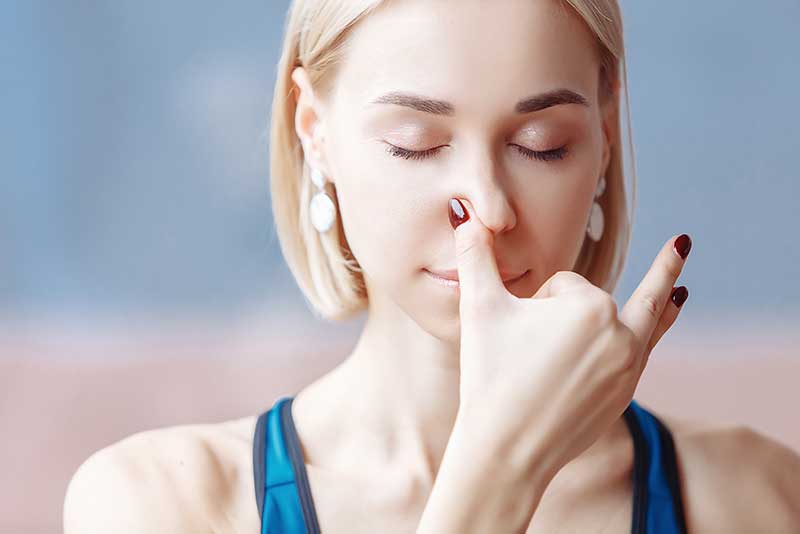Pranayama, my friend, is like the Jedi mind trick of the yoga world. It’s all about the power of controlled and conscious breathing. Just like how the Force flows through the Jedi, prana, the life force energy, flows through us during pranayama. And guess what? The science behind it is as mind-boggling as the latest plot twists in our favourite movies!. In this blog, let’s explore the fascinating Science behind pranayama and how breathing techniques affect the body.
Ancient Science Behind Pranayama
Imagine you’re in a magical realm, like Hogwarts in the world of Harry Potter. Just as the wizarding world has its own ancient wisdom and practices, the ancient science behind pranayama is like a hidden spellbook of secrets.
In this mystical world, think of pranayama as your wand, and your breath as the magical incantation. Just like Harry Potter and his friends learned to control their wands to cast spells, pranayama allows you to harness the power of your breath to create remarkable effects in your body and mind.
Now, picture the nadis, those subtle energy channels, as the intricate pathways of the Marauder’s Map. Just as the map reveals hidden passageways and connects different parts of Hogwarts, the nadis criss cross throughout your body, linking everything together. By practicing pranayama, you tap into these energy channels, unleashing the magic within you.
But wait, there’s more! Prana, the life force energy, is like the magical essence that flows through these nadis. It’s the equivalent of the Force in Star Wars or the Mana in the world of Dungeons & Dragons. This vital energy is what gives life to your breath and infuses it with power.
In this fantastical world, the science behind pranayama becomes a blend of ancient wisdom and enchanting possibilities. Just as the characters in Lord of the Rings used elven magic to restore balance and heal, pranayama aims to restore the balance of prana within you, promoting health, vitality, and inner harmony.
Modern Science Behind Pranayama
Now that we know how ancient science believed in the techniques of pranayama, let’s explore what modern science found out: “ Is Pranayama scientifically proven”?
Oxygenation and Energy:
One of the primary effects of pranayama is increased oxygenation of the body. By consciously deepening and slowing down the breath, pranayama enhances the exchange of oxygen and carbon dioxide in the lungs, leading to a higher oxygen supply to the bloodstream. This oxygen-rich blood nourishes the cells, tissues, and organs, promoting energy production and vitality throughout the body.
Autonomic Nervous System Regulation:
Pranayama practices influence the autonomic nervous system, which controls involuntary bodily functions. Slow, deep breathing activates the parasympathetic nervous system, also known as the “rest and digest” response. This activation leads to a decrease in heart rate, blood pressure, and the release of stress hormones, promoting a state of relaxation, calmness, and improved cognitive function.
Stress Reduction and Emotional Well-being:
Through its impact on the autonomic nervous system, pranayama helps regulate the body’s stress response. Deep breathing stimulates the vagus nerve, which plays a crucial role in calming the nervous system and reducing anxiety. Regular practice of pranayama techniques such as Nadi Shodhana and Bhramari has been shown to lower levels of cortisol, the primary stress hormone, and enhance emotional well-being.
Respiratory Function:
Pranayama exercises focus on breath control, expanding lung capacity, and improving respiratory efficiency. These practices strengthen the respiratory muscles, enhance the flexibility of the diaphragm, and promote efficient oxygen utilisation. Over time, this can improve respiratory function, increase lung capacity, and alleviate respiratory conditions such as asthma.
Heart Health:
The rhythmic and controlled breathing patterns in pranayama positively influence cardiovascular health. Slow, deep breathing improves heart rate variability, which is a marker of heart health and resilience. Regular practice of pranayama can help lower resting heart rate, reduce blood pressure, and improve circulation, thereby reducing the risk of cardiovascular diseases.
Brain Function and Mental Clarity:
Pranayama has profound effects on brain function and mental clarity. Deep breathing techniques increase cerebral blood flow and oxygen delivery to the brain. This improves cognitive function, concentration, and memory. Pranayama practices like Kapalabhati and Sheetali have been shown to enhance alertness, focus, and overall mental performance.
Science Behind Anulom – Vilom Pranayama

Anulom Vilom Pranayama, also known as alternate nostril breathing, has been shown to have several physiological and psychological benefits.
- Research study: A study published in the International Journal of Yoga investigated the effects of Anulom Vilom Pranayama on attention and memory. The results showed significant improvements in attention and memory performance in participants who practised Anulom Vilom Pranayama compared to a control group (Subramanya & Telles, 2009).
- Another research study published in the Journal of Clinical Neuroscience examined the impact of Anulom Vilom Pranayama on heart rate variability (HRV), which is an indicator of autonomic nervous system activity. The study found that practising Anulom Vilom Pranayama led to an increase in HRV, suggesting a shift towards parasympathetic dominance and enhanced relaxation response (Pal, Velkumary, & Madanmohan, 2004).
Science behind Bhramari Pranayama
Bhramari Pranayama, also known as humming bee breath, involves producing a humming sound while exhaling, resulting in various physiological and psychological effects.
- Research study: A study published in the International Journal of Psychophysiology examined the impact of Bhramari Pranayama on brain wave activity. The findings revealed that practising Bhramari Pranayama led to an increase in alpha brain wave activity, indicating a state of relaxed alertness and enhanced focus (Telles et al., 2013).
- Another study published in the Journal of Alternative and Complementary Medicine investigated the effects of Bhramari Pranayama on stress and anxiety levels. The results showed a significant reduction in stress and anxiety in participants who practised Bhramari Pranayama compared to a control group (Dhananjai et al., 2015).
Conclusion:
The science behind breathing practices demonstrates its powerful influence on the body’s physiology and overall well-being. From enhancing oxygenation and energy levels to regulating the autonomic nervous system and reducing stress, pranayama techniques offer numerous benefits. By incorporating pranayama into your daily routine, you can experience improved respiratory function, heart health, brain function, and emotional well-being. Embrace the science behind pranayama, explore the techniques, and embark on a journey of holistic health and vitality.
Resources:
- https://www.scirp.org/%28S%28lz5mqp453edsnp55rrgjct55%29%29/reference/referencespapers.aspx?referenceid=2402564
- https://pubmed.ncbi.nlm.nih.gov/19674483/
- https://www.ncbi.nlm.nih.gov/pmc/articles/PMC7735501/
- https://www.ncbi.nlm.nih.gov/pmc/articles/PMC3734635/
- https://www.ncbi.nlm.nih.gov/pmc/articles/PMC9167919/

Anjani Kumar Shrivastava, a distinguished yoga expert with decades of experience, brings healing and wisdom through yoga therapy, meditation, and Ayurvedic principles. His remarkable Read more


